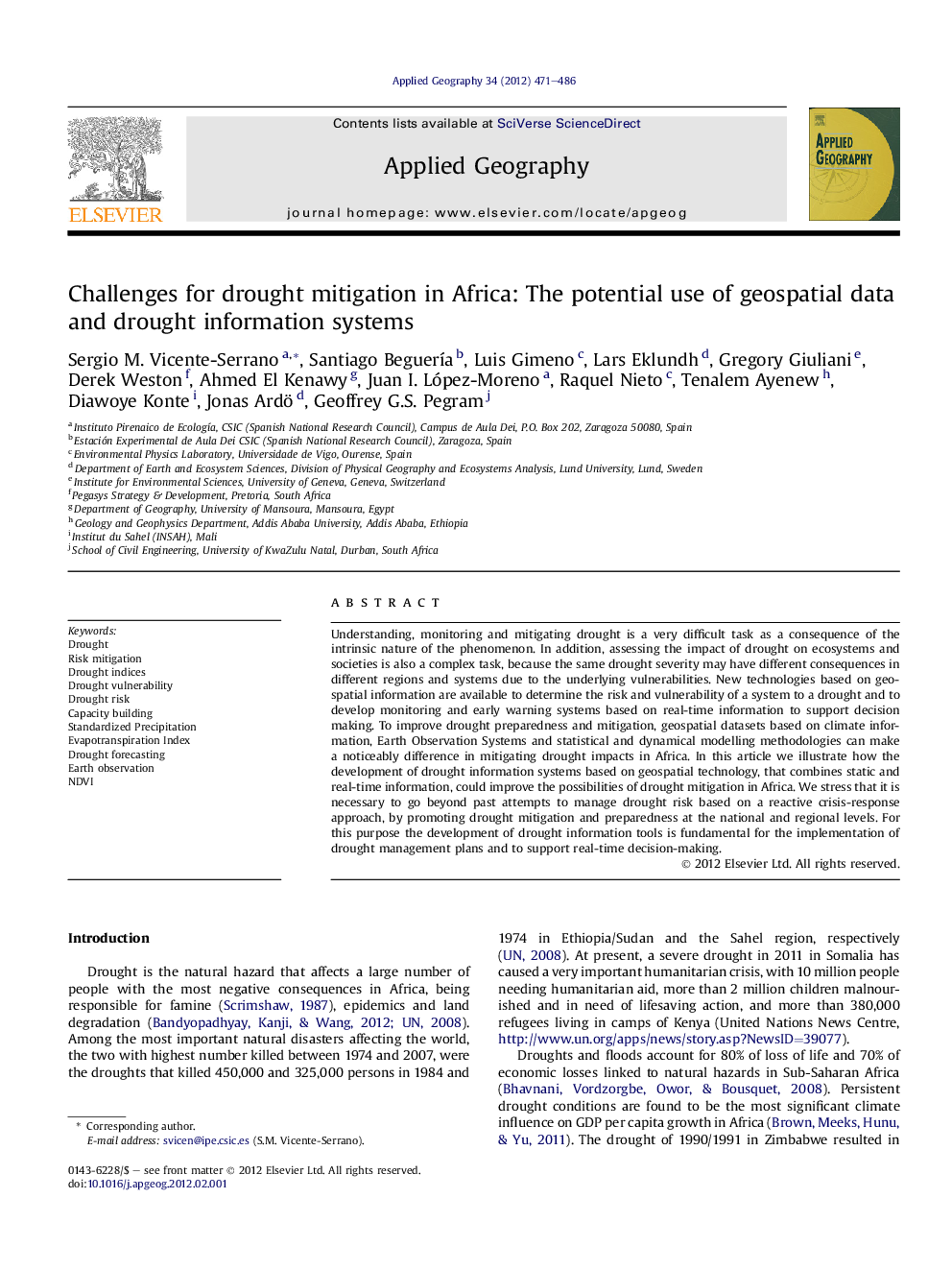| Article ID | Journal | Published Year | Pages | File Type |
|---|---|---|---|---|
| 83450 | Applied Geography | 2012 | 16 Pages |
Understanding, monitoring and mitigating drought is a very difficult task as a consequence of the intrinsic nature of the phenomenon. In addition, assessing the impact of drought on ecosystems and societies is also a complex task, because the same drought severity may have different consequences in different regions and systems due to the underlying vulnerabilities. New technologies based on geospatial information are available to determine the risk and vulnerability of a system to a drought and to develop monitoring and early warning systems based on real-time information to support decision making. To improve drought preparedness and mitigation, geospatial datasets based on climate information, Earth Observation Systems and statistical and dynamical modelling methodologies can make a noticeably difference in mitigating drought impacts in Africa. In this article we illustrate how the development of drought information systems based on geospatial technology, that combines static and real-time information, could improve the possibilities of drought mitigation in Africa. We stress that it is necessary to go beyond past attempts to manage drought risk based on a reactive crisis-response approach, by promoting drought mitigation and preparedness at the national and regional levels. For this purpose the development of drought information tools is fundamental for the implementation of drought management plans and to support real-time decision-making.
► Drought information systems based on geospatial technology could enhance drought mitigation in Africa. ► Real-time drought monitoring is indispensable to guarantee the operability of drought preparedness plans. ► It is necessary to involve stakeholders and institutions in drought initiatives.
